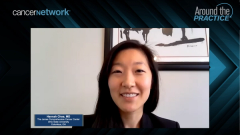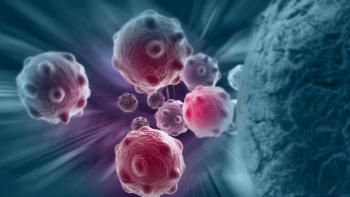
Differences in Pathology of Acute and Chronic GVHD
Pashna N. Munshi, MD, and Yi-Bin Chen, MD, examine key differences in the pathologic features of acute and chronic GVHD.
Episodes in this series

Transcript:
John F. DiPersio, MD, PhD: What about the biology of chronic GVHD [graft-vs-host disease] compared with acute GVHD? Maybe we can ask Pashna. What are some of the hallmark differences in the pathology of acute and chronic GVHD?
Pashna N. Munshi, MD: To a layperson and to patients, it’s a very angry and immature immune system in form of an acute GVHD in the host. It’s going in there like a bull in a china shop, trying to kick everything it sees. The main organs that it’s going to affect are the ones that are obviously damaged from previous chemotherapy or radiation, whatever the conditioning regimen that patient received. That’s why the lower gut and the skin are more vulnerable if they’ve had TBI [total body irradiation], and also the liver. In terms of chronic GVHD, it’s more of an autoimmune phenomenon, even alongside this low level of ongoing constant cyclical inflammation and injury to the tissue. Then there’s further fibrosis and scarring that eventually takes over. Which is very different from the acute loud flare that can happen anytime overarching this chronic inflammatory syndrome.
John F. DiPersio, MD, PhD: Yi-Bin, what about the role of T cells vs B cells in chronic GVHD?
Yi-Bin Chen, MD: We view acute GVHD as mainly a Th1 T-cell–driven reaction response. Chronic appears to involve more pathways. In the last decade, the role of B cells has been researched a bunch. It started with situations where you had female donors and male recipients, and the existence of these anti-Y-chromosome antibodies that were found to be associated with chronic graft-vs-host disease, which suggests that there was a role for B cells and all humeral immunity. That eventually led to the development of targeting B-cell pathways as a form of therapy. It plays a role in certain patients. I wish we had ways to figure out which immunological pathway was more active for different patients with chronic graft-vs-host disease. That might be able to guide our therapy or personalize it. But we don’t. There’s a role for B cells. It’s not present in all patients but definitely in some.
John F. DiPersio, MD, PhD: There’s this weird and rare subset of T cells, called T follicular helper cells, that seem to contribute to chronic GVHD through expansion. These are T cells that can expand, like in anyone who has acute GVHD, but they get into residual germinal centers. They wreak havoc by activating B cells in the germinal centers, which you developed as polyclonal B-cell expansion. Eventually, certain clones of B cells expand to the point where antibodies made are cross-reactive to self-tissues. You get some of these long-term effects on tissues that you see in autoimmune diseases or mixed connective tissue diseases. We don’t know that much about the biology of chronic GVHD, but I would suggest that these T follicular helper cells play an important role in the biology of linking the T cells with the B cells, and both are necessary for the generation of the disease.
Hannah Choe, MD: This is in addition to the more recent data with macrophage activation too, right? Get another cell subset that’s contributing to the pathogenesis and chronic GVHD. That’s an exciting area as well that we’ll be learning more about.
John F. DiPersio, MD, PhD: Exactly.
Transcript edited for clarity.
Newsletter
Stay up to date on recent advances in the multidisciplinary approach to cancer.






















































































